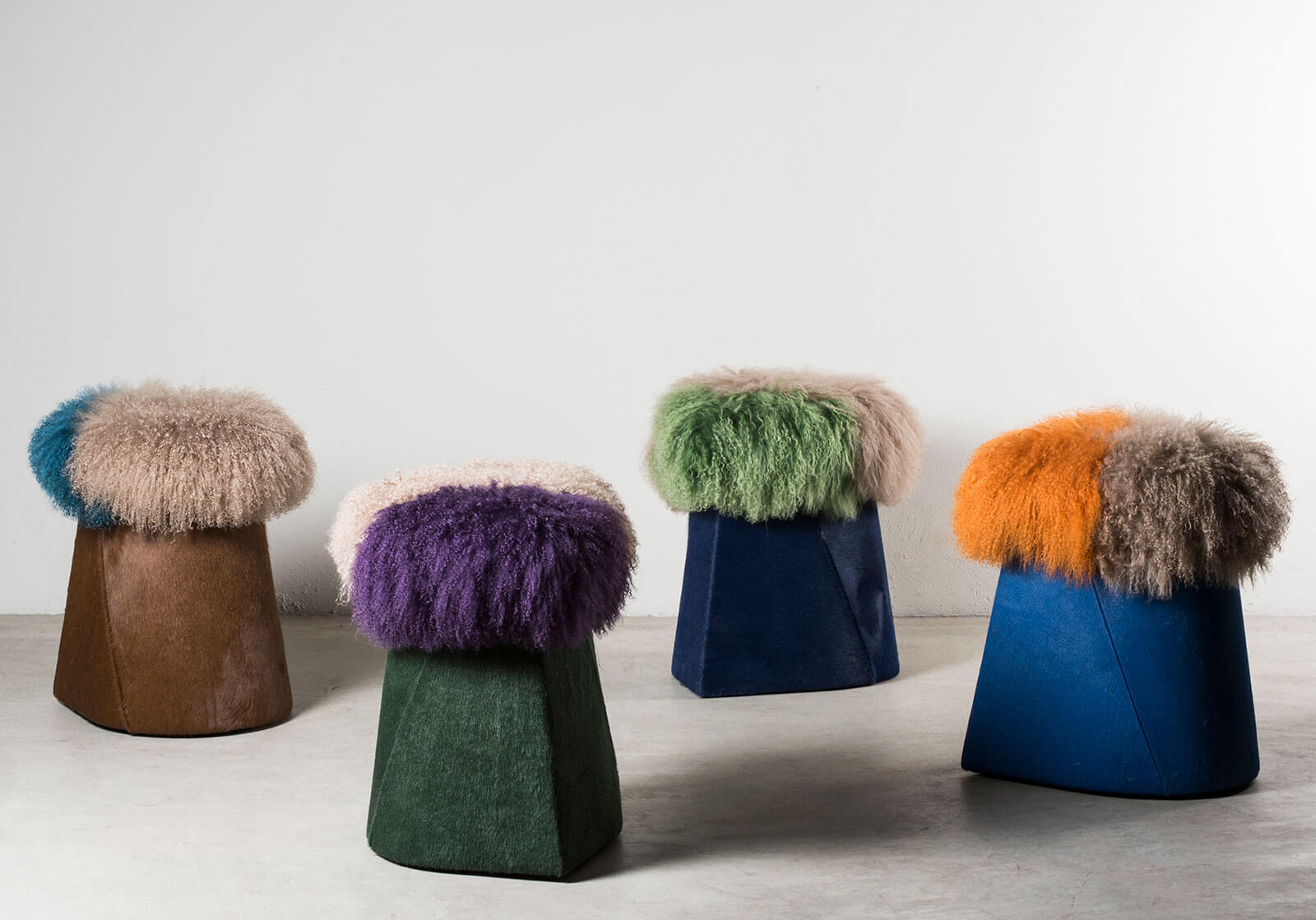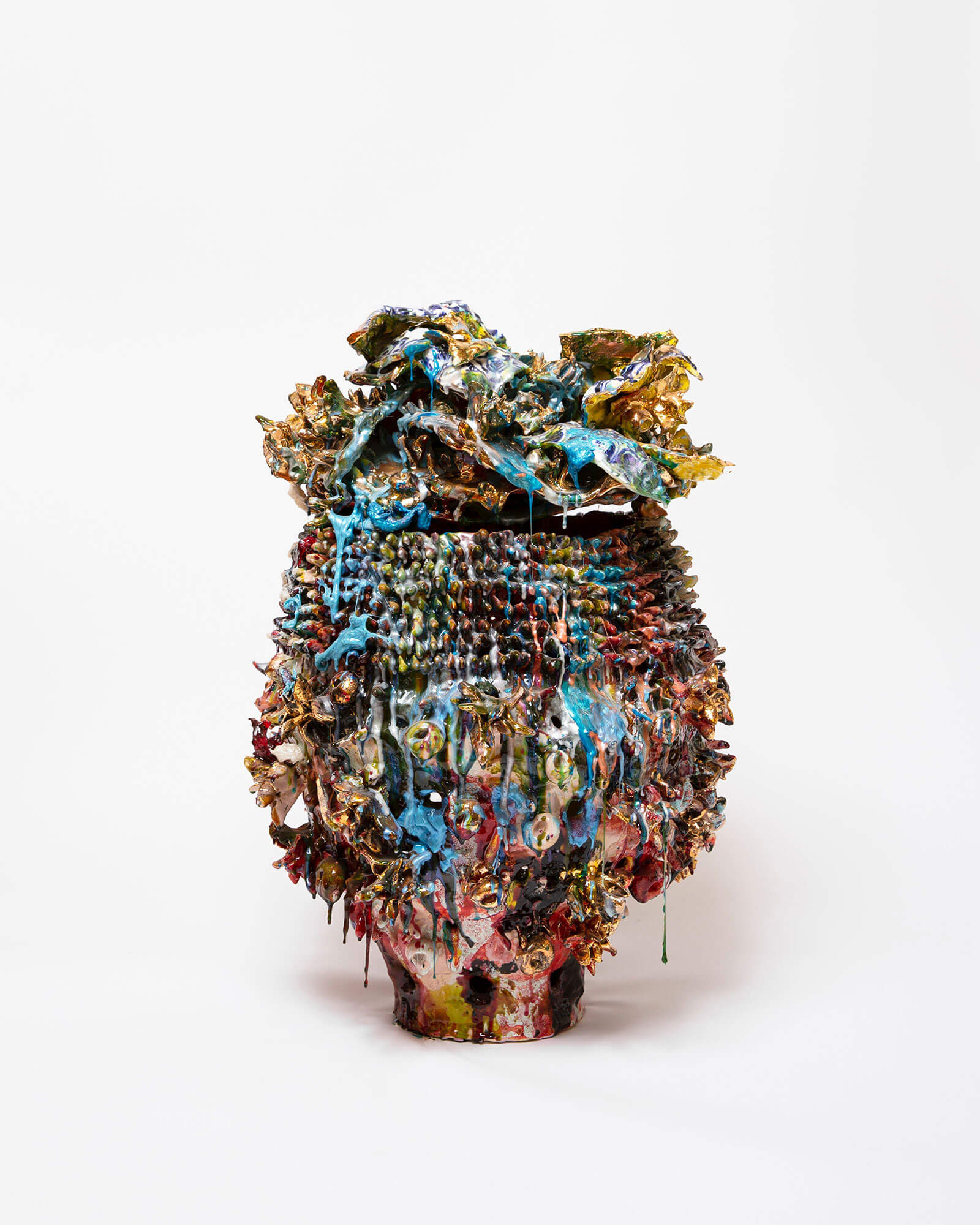FAIR REVIEW / Miart
The Milanese fair of art and design was marked by a buoyant mood and engaging curation.

Ico Parisi, ‘Floor mirror’, circa 1980
COURTESY: Eredi Marelli, Cantù
ITALY’S FIRST REAL life art fair for 18 months opened its doors in mid-September in the renovated Fiera Milano City. Around 142 booths exhibited modern and contemporary art in a spacious layout devised by the fair’s new artistic director Nicola Ricciardi. With a post-Covid manifesto to “take down the boundaries between contemporary and masters and focus on quality, not quantity,” Ricciardi managed to woo many of Italy’s blue-chip galleries back to the annual event and create a new section dedicated to 24 emerging galleries from as far afield as Lima and Moscow.

Visitors to Miart
COURTESY: Miart
A buoyant atmosphere saw gallerists enjoying face-to-face contact and collectors eager to spend. Gallerists had had plenty of time to curate booths for their debut and the resulting mix was eclectic and engaging. “I found really high-quality galleries, paying extreme attention to detail and to curating pieces together,” said Patrizia Sandretto Re Rebaudengo, a high-profile collector and patron from Turin. Ricciardi’s mission to create an unexpected layout by placing blue-chip galleries next to newcomers, design alongside art, paid off. “Design was here and there – not altogether in one place – and when I least expected it,” Sandretto Re Rebaudengo added.

Martino Gamper, ‘Wikatoria’ stool for Nilufar, 2018
COURTESY: Martino Gamper and Nilufar
Nilufar displayed pieces from an exhibition entitled ‘Gio Ponti translated by Martino Gamper’ alongside contemporary works by Lindsey Adelman, Audrey Large and Flavie Audi. In 2008, Gamper reconstructed some of Ponti’s furniture, sourced by Nilufar from iconic projects such as Hotel Parco dei Principi in Sorrento, to create the collection. These works, alongside an upholstered ‘mod.803’ sofa and armchairs by Ponti himself, all sold easily – proof, if any were needed, of the midcentury maestro’s enduring popularity.

Gio Ponti, ‘Pair of armchairs model 803’, circa 1950
COURTESY: Nilufar / PHOTOGRAPH: ©danieleiodice
Atelier Eredi Marelli, a go-to workshop for every designer in need of flawless carpentry since 1934, displayed a mix of works from late Italian masters (all of whom were clients). Pieces by the likes of BBPR, Enzo Mari and Angelo Mangiarotti created an eclectic stand. “We wanted to show them together because the language is so different,” explained Michele Marelli.

Bruno Gambone, Selection of historical ceramics 1980-2000
COURTESY: Rossella Colombari / PHOTOGRAPH: Federico Torra
Piacenza-based gallery ED presented a show of ceramics focusing on Italy’s ‘golden decade’ (1920-1930) with stand-out works from Arturo Martini and Galileo Chini. “It was a decade of explosive force, ceramics, glass, worked metals, fabrics, bronzes, embodying the vigour of high artisan and proto-industrial production,” explained gallery founder Davide Cammi. So prolific were the talents of the time that an international biennial of decorative arts took place in Monza in 1923, 1925, 1927 and 1930.

Ceramics from Ed Gallery
COURTESY: Miart
Among them was German-born artist Herta Ottolenghi Wedekind, whose hand-embroidered and woven tapestries were on show at Galleria Gomiero. The abstract patterns, unusual stitching techniques and the use of hemp and jute sackcloth backing were avant-garde at the time. “We discovered them in beautiful antique chests signed ‘Ottolenghi’,” said gallery co-founder Giulia Gomiero. “They were a surprising find.”

Herta Ottolenghi Wedekind, tapestry, circa 1920
COURTESY: Galleria Gomiero
While most booths had a distinctly Italian feel, Officine Saffi displayed the work of five young female artists from Denmark to “celebrate the incredible ceramics that have been coming from that country over the past decade,” explained gallery director François Mellé.

Installation view, Officine Saffi at Miart 2021. (Foreground) work by Pernille Pedersen; (Background) work by Turi Heisselberg Pedersen
COURTESY: Officine Saffi / PHOTOGRAPH: Alessandra Vinci
“Gallerists had had plenty of time to curate booths for their debut …”

Work by Aya Simone Bækhøj Schmidt at Officine Saffi, Miart 2021
COURTESY: Officine Saffi / PHOTOGRAPH: Alessandra Vinci
“… and the resulting mix was eclectic and engaging”
Beyond the fair, in two city venues, the work of the 45 finalists of the Officine Saffi Award is on show until 6th November. New Zealand artist Virgina Leonard has recently been announced the winner of the €10,000 prize for her ceramic work ‘Pus and Scabs’. “It means more to me also as the other artists in the award are very skilled, and more often than not their work is highly technical,” Leonard said, “I appreciate the panel of judges looking past that and seeing the expression and gesture within the work and the painterly quality as well.”

Virginia Leonard, ‘Pus and Scabs’, 2021
COURTESY: Officine Saffi
The biennial prize, now in its fourth year, promotes contemporary ceramics, and the gallery is one of many hosting punchy autumn exhibitions. For a city that started September with Salone del Mobile and ends it with Fashion Week, Milan is making up for lost time.







